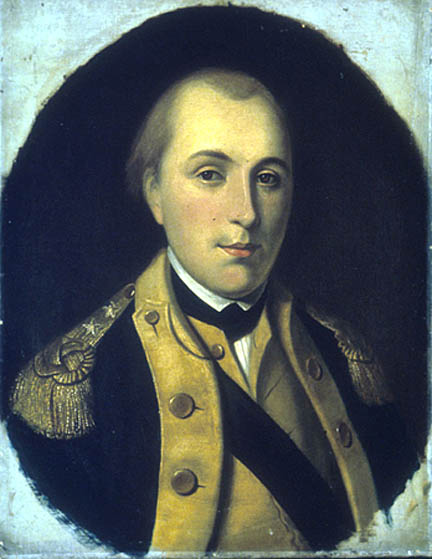
 |
||||||||||
MARIE JOSEPH PAUL YVES ROCH GILBERT MOTIER, MARQUIS DE LAFAYETTE 1757-1834 Charles Willson Peale, after Charles Willson Peale, 1779-1780 Oil on canvas. H 23, W 18 in (H 58.4, W 45.7 cm) Independence NHP INDE 14080
|
||||||||||
| About this Portrait: As tokens of their mutual admiration, George Washington and Lafayette simultaneously commissioned portraits of each other from artist Charles Willson Peale in 1778 or 1779. Peale left the three-quarter length Lafayette portrait (now at Washington and Lee University) unfinished for almost a year, apparently reluctant to part with such an important subject. Before he sent the portrait to Mount Vernon, Peale painted a bust-length replica of it for the museum. The replica is included in the October 13, 1784 list of the museum's collections printed in the Freeman's Journal and Philadelphia Daily Advertiser. Ownership History: Listed in the 1795 Peale Museum catalog. Purchased by Captain William Wayne at the 1854 Peale Museum sale. Purchased by Albert Rosenthal for the City of Philadelphia from Wayne's granddaughter in 1903. |
||||||||||
|
||||||||||
|
|
||
|
Note: Prev/next are in alphabetic order within their respective theaters. |
||
Last Modified: